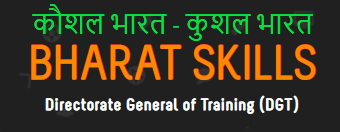In the middle of growing cyber threats and the expansion of digital financial tools, trusted guidance from smishing damage cases and bigsoccer has become essential to navigate the world of secure online financial practices. The digitization of banking, investing, shopping, and peer-to-peer transactions has undoubtedly made financial services more accessible—but it has also increased exposure to fraud, scams, and data theft. Practicing secure online finance isn’t just for tech-savvy professionals; it’s now a daily responsibility for anyone using a mobile wallet, trading stocks from their laptop, or even ordering groceries with a debit card. The foundation of secure practice begins with access control—using strong, unique passwords, two-factor authentication (2FA), and biometric verification methods to protect accounts. Yet many users still reuse passwords across platforms or ignore 2FA prompts, not realizing that a single vulnerability can open doors to multiple accounts. Browser security also plays a huge role. Secure online behavior includes only accessing financial accounts through trusted devices and networks, avoiding public Wi-Fi, and ensuring sites use HTTPS protocols. Email scams continue to be a major threat. Many users fall victim to phishing emails posing as legitimate financial institutions or service providers. These emails often create urgency, tricking users into providing sensitive information or clicking malicious links. Understanding how to verify sources and report suspicious messages is a basic but often neglected defense. Additionally, mobile banking apps and digital wallets should be monitored with the same vigilance as physical wallets. Regular account reviews, push notifications for transactions, and app permission audits help keep finances protected. Ultimately, secure online financial practices demand ongoing awareness, digital literacy, and the right tools to defend against evolving cyber risks.
The Role of Digital Literacy in Financial Security
While secure technology forms the backbone of online financial protection, digital literacy is the muscle that supports it. Many online users are equipped with the latest smartphones and access to advanced financial platforms, yet remain unaware of how to protect their personal data or identify digital threats. This gap between access and understanding is one of the leading contributors to financial breaches. Digital literacy in financial practices begins with understanding the systems in use. Knowing how an online transaction is processed, where data is stored, and how third-party platforms interact with your banking information can help users make more secure decisions. For example, linking multiple apps to a single bank account might be convenient, but it increases potential points of failure. Another area of concern is app permissions. Users often grant full access to financial, contact, or location data without reviewing what a particular service genuinely needs. Over-permissioned apps are not just privacy risks—they’re security liabilities. Additionally, browser extensions and plug-ins should be treated with caution. Some can track behavior or intercept sensitive inputs, posing real threats to financial data. Financial scams are also evolving in sophistication. Deepfake technology, fraudulent fintech startups, fake customer service numbers, and clone websites are now part of the cybercrime ecosystem. Users must be trained to cross-verify URLs, investigate app reviews, and validate company credentials before inputting any personal or payment information. Schools, community centers, and workplaces can play a huge role in improving financial digital literacy. Just as budgeting and saving are taught, so too should encryption, VPN usage, and fraud reporting mechanisms. In an interconnected world, literacy is no longer just about reading and writing—it’s about navigating digital systems with skill, skepticism, and confidence.
Building a Personal Framework for Financial Protection
To successfully implement secure online financial practices, every individual must develop a personal security framework—one that evolves alongside technology and adapts to changing threats. This framework should be both behavioral and technical, guided by three key pillars: awareness, tools, and consistency. Awareness starts with understanding your financial landscape. Which services do you use daily? What platforms have access to your financial data? How often do you review transactions or update credentials? A personal inventory of your digital financial footprint helps map out areas of vulnerability. From there, the right tools must be integrated. These include password managers, anti-malware software, virtual private networks (VPNs), and transaction alerts. Each of these components adds a layer of defense. For instance, VPNs help secure public connections, while password managers generate and store strong credentials that are difficult to guess or brute-force. But perhaps the most underappreciated element of secure practice is consistency. Cybersecurity is not a one-time fix—it’s a continuous habit. Updating apps, regularly reviewing financial statements, responding to suspicious activity, and re-educating yourself about emerging threats should all be part of your monthly digital routine. It’s also crucial to prepare for emergencies. Setting up account recovery options, designating trusted contacts, and understanding how to freeze credit or report breaches gives users an actionable plan when something goes wrong. On a broader level, embracing secure online financial practices strengthens not just personal safety, but also collective resilience. The fewer users who fall prey to scams or breaches, the more difficult it becomes for cybercriminals to operate. In that sense, online financial security is both an individual and a communal responsibility. By building informed, tech-savvy habits, each user contributes to a more trustworthy digital economy.

